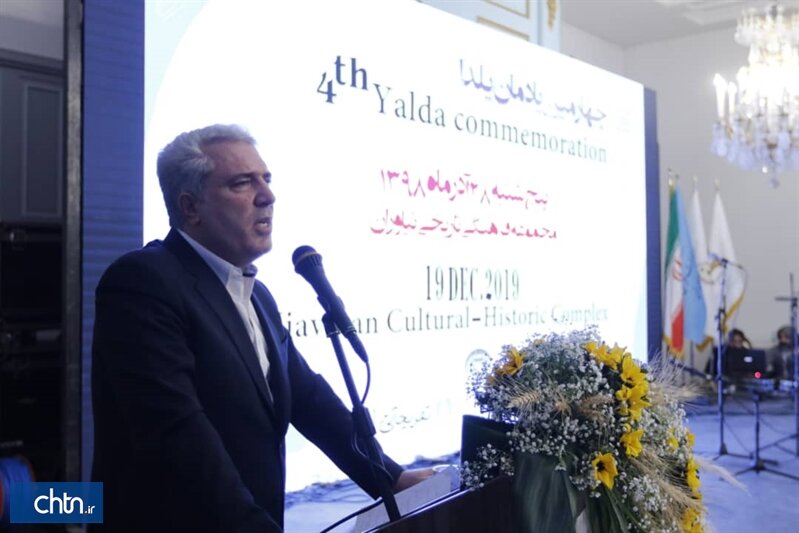Yalda is a beautiful manifestation of Iran’s cultural heritage: tourism minister

TEHRAN – Iran’s tourism minister has said that Yalda Night is a beautiful manifestation of Iran’s intangible cultural heritage.
“In the Iranian culture, Yalda is of high importance because it is the aftermath of a long darkness, [it’s an] illumination, and the symbol of the dominance of the light over the darkness. Yalda is a symmetry of our geography and culture,” Ali-Asghar Mounesan said on Thursday.
Of all the ancient Persian festivals, only two are commonly celebrated by Iranians worldwide -- Yalda Night (the birth of a new sun) and Noruz or Persian New Year (the birth of a new day).
Mounesan made the remarks addressing the 4th Yalda Commemoration, which was held at the Niavaran Cultural-Historical Complex in northern Tehran.
The event was attended by foreign envoys and diplomats from China, Austria, Bangladesh, Russia, Turkey, Brazil, South Africa, South Korea and several other countries, CHTN reported.
“We are blessed that there is so much cultural richness in the country and many of those are being shared with the rest of the world.”
The minister said that such cultural affinities helps neighbors becoming closer, “There are Yalda themes in Tajikistan, Afghanistan, Armenia and some other countries, which is a source of Iran’s proximity to its neighbors.”
Elsewhere in his remarks, Mounesan pointed to Iran’s Dotar (meaning “two strings”) instrument, which its traditional skills of crafting and playing was added to UNESCO’s list of the Intangible Cultural Heritage of Humanity earlier this month.
“I congratulate the entire Iranian people on the registration of another intangible heritage of our country, the Iranian Dotar, in the [UNESCO list of] Intangible Cultural Heritage. A nation with ancient civilization, unique and striking background that are messengers of a mystical and transcendent culture.”
“In today’s tumultuous world, which unfortunately is mingled with spreading cruelty and oppression, the only thing that can promote peace and friendship is such arts and culture [of the various nations],” he noted.
Yalda is celebrated on the last evening of autumn that falls on December 21 this year. It’s a time for pleasant family reunions that entails laughter, merriment, and good cheer. Hearts move closer to one another in the company of loved ones on Yalda.
Called “Shab-e Yalda” or “Shab-e-Chelleh”, it literally means the night of the forty. This refers to the first forty days of winter that are often the coldest and toughest to bear. The story of Yalda may perhaps be interpreted as a tale of courage and effort during darkness, a triumph of light and human warmth that ultimately causes the spring to bloom in heart.
People on Yalda Night are usually served with fresh fruits and colorful Ajil (a mixture of dry fruits, seeds, and nuts) in floral bowls. To Iranians, fruits are reminders of abundance in summer. Watermelon and pomegranates, as symbols of bounty, are the traditional fresh fruits of this night. It is believed that eating watermelon before the arrival of winter can immunize the body against illness.
According to UNESCO, Yadla ceremonies, in a best way, point to cultural diversity and human creativity, especially when one considers the wide range of the communities that celebrate it.
Iran seeks to register the ancient festivity of “Yalda” on UNESCO’s list of Intangible Cultural Heritage of Humanity in 2021.
AFM/MG
Leave a Comment